Best Oil Based Paint Sprayer — Buyer’s Guide, How-To, Reviews, and Comparison
An oil based paint sprayer will make short work of operating with this medium density coating — leaving you with professional results that can be difficult to achieve with a brush or roller. It will expel a fine atomization while still being easy to control, even for inexperienced users. Furthermore, arriving with the perfect-sized nozzle will reduce the hassle of trying to procure an extra tip.
- 2800 PSI operating pressure.
- 515 fluid nozzle.
- PowerFlush adaptor for quick cleaning.
- 30 percent lighter trigger pull.
Oil Paint Sprayer Comparison Table
| IMAGE | PRODUCT | DETAILS | ||
|---|---|---|---|---|
|
Best for Inexperienced Users 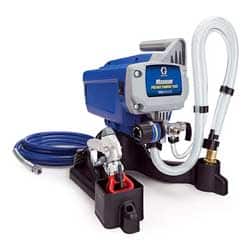
|
Best for Inexperienced Users
|
Features
|
Check Price at Amazon Graco Magnum 257025 Review Graco Magnum 257025 Review | |
|
Best HVLP Oil-Based Sprayer 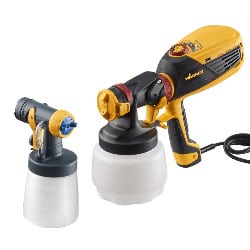
|
Best HVLP Oil-Based Sprayer
|
Features
|
Check Price at Amazon Wagner FLEXiO 3000 Review Wagner FLEXiO 3000 Review | |
|
Best Airless Oil Based Paint Sprayer 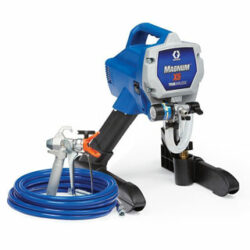
|
Best Airless Oil Based Paint Sprayer
|
Features
|
Check Price at Amazon Graco Magnum X5 Review Graco Magnum X5 Review | |
|
Best for Small to Midsize Projects 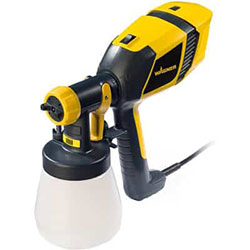
|
Best for Small to Midsize Projects
|
Features
|
Check Price at Amazon Wagner Control Spray 250 Review Wagner Control Spray 250 Review | |
|
Best Handheld Oil-Based Sprayer 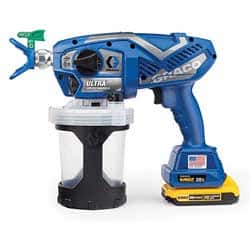
|
Best Handheld Oil-Based Sprayer
|
Features
|
Check Price at Amazon Graco 17M367 Review Graco 17M367 Review | |
|
Best for a Pro-Looking Finish 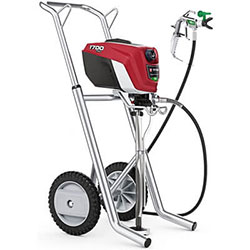
|
Best for a Pro-Looking Finish
|
Features
|
Check Price at Amazon Titan ControlMax 1700 Review Titan ControlMax 1700 Review | |
|
Best Tank Sprayer for Oil-Based Paints 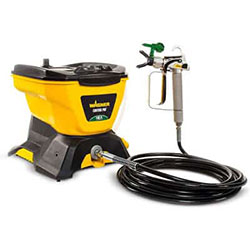
|
Best Tank Sprayer for Oil-Based Paints
|
Features
|
Check Price at Amazon Wagner Control Pro 130 Review Wagner Control Pro 130 Review |
Oil Based Paint Sprayer Buying Guide
- Suitably sized fluid nozzle.
- Adequate portability.
- HVLP or airless technology.
- Variable pressure output.
Why Use Oil-Based Paint?
Oil-based paints use a combination of petrochemical solvents and mineral spirits as their base — known in the industry as Alkyd. Although, there is also a slightly more expensive natural linseed version available.
Whichever version you prefer, both are renowned for being extremely durable and increasing the level of protection on exterior items — as well as interior trim, kitchen cabinets, bathrooms, and doors.
This coating does take a little longer to dry than its alternatives and will require the use of turpentine, mineral spirits, or thinner for clean up. However, in return, you’ll be rewarded with a richer color tone that can cover stains and offer resistance against temperature fluctuations.
How To Choose the Best Oil Based Paint Sprayer
HVLP or Airless Technology
Airless systems come into their own if you desire to coat medium to large expansive outdoor spaces on a regular basis. Alternatively, if your jobs will be mostly focused on interior work, an HVLP machine that’s well-known for minimizing overspray could be a better solution for you.

Portability
If you need the grunt of a larger spray gun for oil based mediums, then lookout for a wheeled unit with a sturdy handle — or a skid-style machine that can be effortlessly maneuvered. A bonus in this type of device is a lengthy hose — it will reduce the number of occasions you have to move the main body of the machine.
Alternatively, a handheld oil spray gun is a great choice if you intend to complete small to midsize tasks. In this instance, the paint cup should be adequately sized to reduce downtime caused by frequent refills.
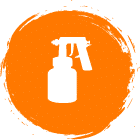
Nozzle Size
While it appears to be quite a diverse size range, generally speaking, oil-based mediums will require thinning — meaning, you can get away with a narrower orifice diameter. That said, some units will be able to handle the more viscous version without being diluted (as per the manufacturer’s instructions) — this is where the larger tip size will be useful.
Before you invest in your unit, check that it has a suitably sized nozzle — if it’s not included as standard, many oil spray guns will support the use of different sized tips (at an extra cost).
Variable Pressure Output
You can crank up the pressure to accomplish large-scale projects rapidly and then tone it down when you need to attend to smaller detailed tasks.

Easy To Clean Features
However, any device that has built-in easy-to-clean features will speed up the necessary end-of-day maintenance — as well as ensure that all the oil-based medium is removed from the system.
How To Use an Oil Based Paint Sprayer
What You Will Need to Follow This Tutorial
Ensuring that you have everything to hand before you start will make the entire process a headache-free affair. Check out the list below:
- Oil based paint sprayer.
- Correctly sized fluid nozzle.
- Stir sticks.
- Mixing bucket.
- Oil-based coating.
- Plastic sheeting or drop cloths.
- Screwdriver.
- Masking tape.
- Water.
- Dish detergent.
- Cleaning cloths.
- Sandpaper.
- Fan (if working indoors).
- Workbench.
- Old clothes or coveralls and shoes.
- Goggles, gloves, and respirator or face mask.
How To Paint a Door with an Oil-Based Coating — Step by Step Instructions
Step 1: Preparing Your Work Space and Door
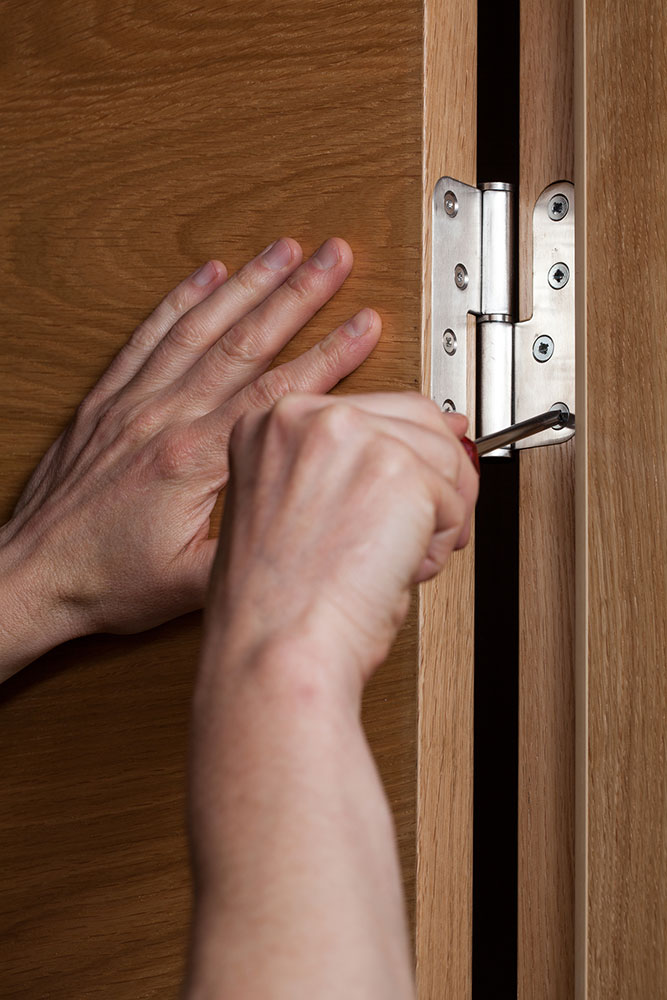
- Oil-based coating and its fumes can cause irritation. Hence, as well as ensuring you have the correct personal protection, it’s a great idea to take your project outside. If this isn’t possible, ventilate your intended workspace with a fan.
- Remove any objects that are close by and lay down a drop cloth or plastic sheeting to protect the floor.
- It’s usually easier to obtain a more consistent coverage if you remove the door from the frame. It also prevents you from having to tape too much of the surrounding area — door frame, hinges, and walls. Depending on the size and weight of the door, you might want to recruit another pair of hands to help you out.
- Remove the hardware. Unscrew the hinges and keep all components together in one place — the best way to do this is to stick them with masking tape. Also, remove any door handles, so that you have a completely blank canvas.
- Once you have removed the door, you may find it easiest to lay the door on a workbench or similar.
- If you’re painting on top of an existing oil-based coat, gently sand away any imperfections. Then, clean the door with a mixture of soap and dish detergent to remove any greasy handprints and the like.
If you’re painting a new unpainted door, you may need to prime it first — depending on the base medium. Also, if you intend to apply your oil-based coating over a pre-existing latex coat, you will need to apply a primer first. This prevents any lifting of the coating later down the road.
- Now the door and your workspace are fully prepared, prepare yourself by putting on your protective gear.
Step 2: Start Spraying
- Following the manufacturer’s guidelines, set up your paint sprayer for oil based coating. Adjust the output settings accordingly and make sure that the appropriate fluid nozzle is installed.
- Check if your chosen oil-based coating needs to be thinned before use. It’s usually noted on the label of the canister — not all require dilution, and it may also depend on the type of sprayer you’re using. If thinning is required, the paint manufacturer should include instructions and ratios on the tin.
- Commence spraying. It’s best to use long passes from top to bottom while keeping the nozzle around 12 inches from the surface.
If your sprayer has a choice of patterns, a relatively wide horizontal pattern will make the process of spraying a touch quicker. Overlap each previous stroke by at least half again for even coverage.
- Aim to leave around 24 hours before applying a second coat — although, it should be touch dry after approximately six hours. In this case, you should clean your sprayer in between coats to maximize the life of your machine. For the exact drying time, check the coating label for guidance. When it’s time to apply the next coat, follow step three again.
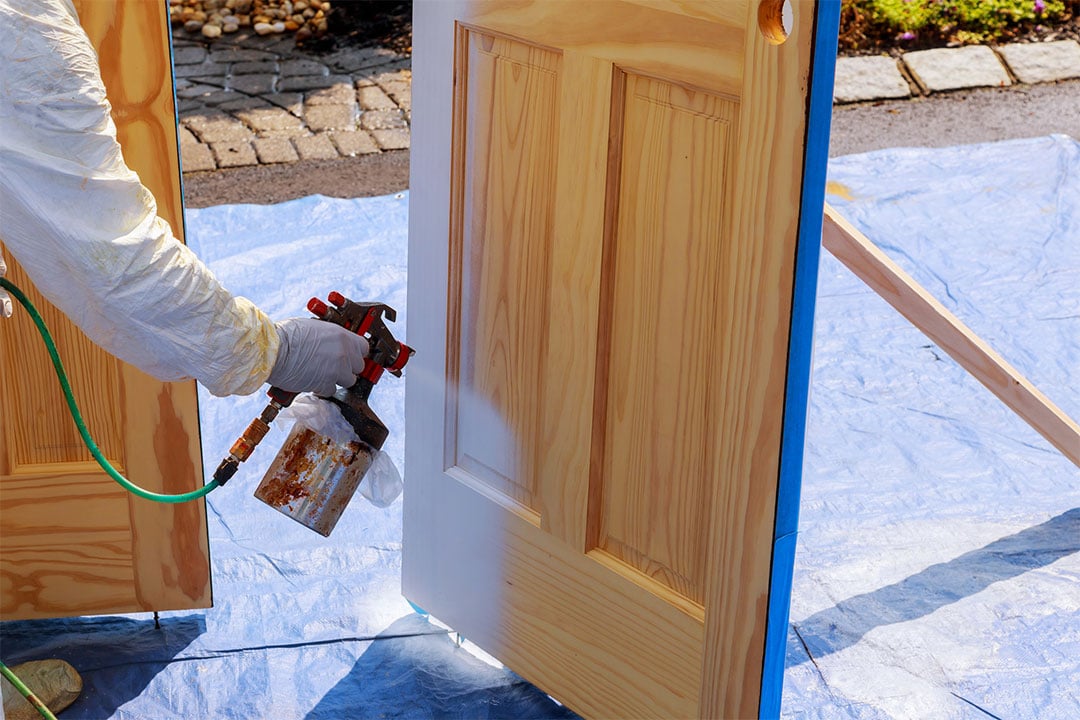
Step 3: Finishing Up
- When you’ve finished painting your door (as well as in between coats if a long drying time is recommended), clean your sprayer thoroughly. Check out the section below to learn how.
- Once the door is completely dry, grab another pair of hands and re-hang it using the nails and hinges that you kept safe. Also, attach the handles.
- Put your workbench away and tidy up any drop cloths and tape that were used.

How To Clean an Airless Paint Sprayer After Using Oil Based Paint
What You Will Need to Follow This Tutorial
- Two buckets.
- Gloves.
- Mineral spirits or paint thinner (approximately one gallon).
- Dropcloth.
Method
- It’s worthwhile placing a drop cloth down first to protect the surface beneath you and make sure you’re wearing gloves.
- Place some paint thinner or mineral spirits in one of the buckets, then submerge the pump or uptake hose.
- Turn the pressure down on your sprayer to minimize splatter.
- Set the sprayer to ‘ON’ and allow the cleaning solution to cycle through your machine.
- After a few cycles, pull the trigger of your spray gun while aiming the nozzle at the empty bucket. You will notice that the first substance eliminated will be undiluted oil-based paint — this is normal.
- Once all the oil-based product has been flushed out, you will start to notice the cleaning medium exiting the nozzle. Continue running the machine for a little longer. If you’re using an airless sprayer, you will also need to rinse the priming hose — so set the machine to PRIME mode and allow it to cycle through with a cleaning solution.
- Continue alternating between the spray gun and priming hose until the liquid exciting runs clear.
- Once running clear, you can begin the process of emptying the machine as per the manufacturer’s guidelines and store it away.
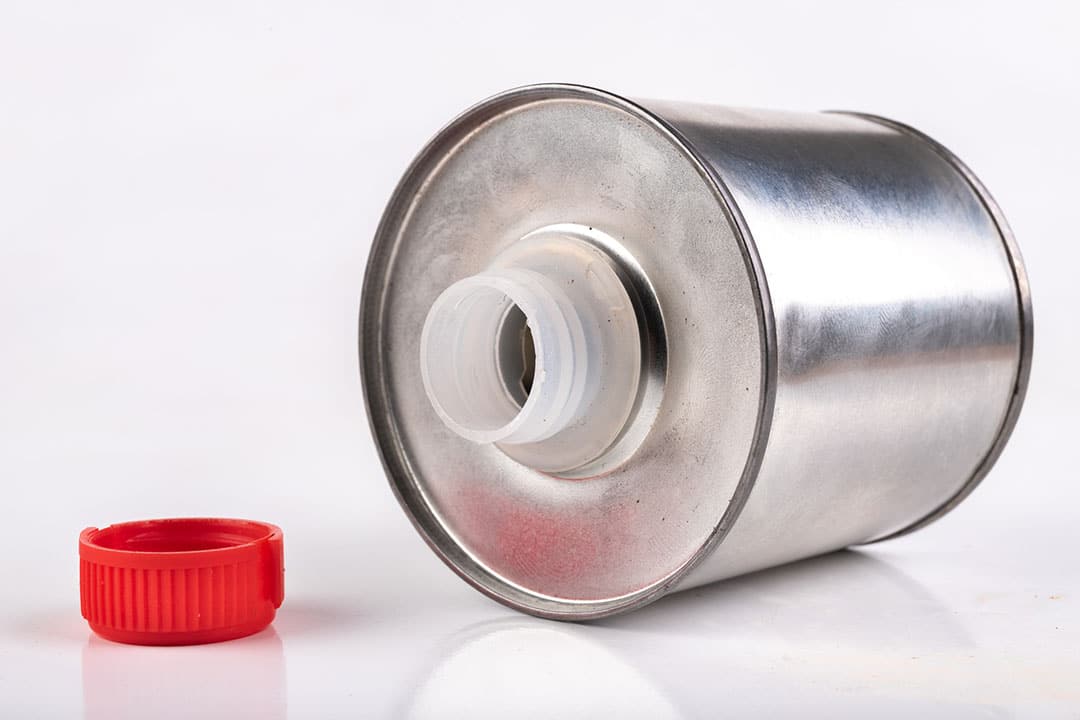
Our Top Picks of the Best Oil Based Paint Sprayers
It’s simple to adjust the pressure output using a sizable dial — permitting you to turn up the speed as you become more acquainted with the unit.
The 515 fluid nozzle is amply sized to handle a wide variety of mediums — without thinning. And, when we look at the portability of this device, the convenient floor stand is fitted with a handle — making it easy to move around your projects.
However, with a 25-foot flexible hose offering a substantial reach, once you’ve set the machine in place, movement should be kept to a minimum. Cleaning is somewhat expedited with the PowerFlush adaptor — as when using water-based paints — you can simply attach it to the garden hose for a quick rinse.
Graco has been operating for over a century, and its products are tried and tested. However, Graco doesn’t like to be seen resting on its laurels and is constantly developing new innovative solutions for the fluid handling industry.
- 2800 PSI operating pressure.
- 25-foot hose.
- 515 fluid nozzle.
- 30 percent lighter four-finger trigger pull.
- 0.38 horsepower motor.
- Ergonomic handle and inbuilt storage.
- Maximum settings are liable to produce high overspray.
- Design
- Functionality
- Price
If you’re a newbie just starting out using oil based paint sprayers, the Graco Magnum Project Painter Plus could be perfect for you. It’s a straightforward-to-use machine that delivers rapid results and flawless finishes.
It’s simple to adjust the pressure output using a sizable dial — permitting you to turn up the speed as you become more acquainted with the unit. Furthermore, the SG2 spray gun is designed with a four-finger operation in mind — meaning that fatigue is greatly reduced when working for long periods of time.
The 515 fluid nozzle is amply sized to handle a wide variety of mediums — without thinning. And, when we look at the portability of this device, the convenient floor stand is fitted with a handle — making it easy to move around your projects.
However, with a 25-foot flexible hose offering a substantial reach, once you’ve set the machine in place, movement should be kept to a minimum. Cleaning is somewhat expedited with the PowerFlush adaptor — as when using water-based paints — you can simply attach it to the garden hose for a quick rinse.
Graco has been operating for over a century, and its products are tried and tested. However, Graco doesn’t like to be seen resting on its laurels and is constantly developing new innovative solutions for the fluid handling industry.
- 2800 PSI operating pressure.
- 25-foot hose.
- 515 fluid nozzle.
- 30 percent lighter four-finger trigger pull.
- 0.38 horsepower motor.
- Ergonomic handle and inbuilt storage.
- Maximum settings are liable to produce high overspray.
- Design
- Functionality
- Price
On arrival, you receive two nozzles and paint cups for the price of one.
It’s easy to be in complete control of this machine — a twelve-step dial allows you to adjust the paint volume output to your precise needs. Furthermore, with a quick twist of the nozzles ears, you can switch between three different spray patterns — round, vertical, and horizontal.
The unit is comfortable to hold with a rubber rippled handle, meaning that when working on sizable jobs, you shouldn’t feel your hand cramping up. Wagner’s proprietary Lock-N-Go system permits a quick breakdown of the unit into separate parts — making it very painless to clean up the device at the end of the day.
Wagner SprayTech started out around seven decades ago and has developed into one of the most trusted names in the spray painting industry. In recent years it has expanded in key areas — as a result, Wagner is now the owner of several other notable brands, including HomeRight and Titan Tools.
- Two different nozzles.
- 1 and 1.5-quart paint cups.
- Robust storage case.
- 12 levels of pressure output.
- Reduced overspray.
- Easy part break down.
- When large paint cup is filled, it could be too weighty for some users.
- Design
- Functionality
- Price
An HVLP oil based paint sprayer, such as the Wagner FLEXiO 3000 is not only versatile, it also greatly reduces dreaded overspray — saving you money on paint wastage and time spent on clean up in the long run. When you’re done for the day, it all fits in a conveniently sized carry case for fuss-free storage.
On arrival, you receive two nozzles and paint cups for the price of one. The bespoke iSpray tip for vast expanses and large tasks — which is coupled with an impressive 1.5-quart paint cup. In contrast, the Detail Finish nozzle and one-quart container are there for when more attention and intricacy are required on smaller jobs.
It’s easy to be in complete control of this machine — a twelve-step dial allows you to adjust the paint volume output to your precise needs. Furthermore, with a quick twist of the nozzles ears, you can switch between three different spray patterns — round, vertical, and horizontal.
The unit is comfortable to hold with a rubber rippled handle, meaning that when working on sizable jobs, you shouldn’t feel your hand cramping up. Wagner’s proprietary Lock-N-Go system permits a quick breakdown of the unit into separate parts — making it very painless to clean up the device at the end of the day.
Wagner SprayTech started out around seven decades ago and has developed into one of the most trusted names in the spray painting industry. In recent years it has expanded in key areas — as a result, Wagner is now the owner of several other notable brands, including HomeRight and Titan Tools.
- Two different nozzles.
- 1 and 1.5-quart paint cups.
- Robust storage case.
- 12 levels of pressure output.
- Reduced overspray.
- Easy part break down.
- When large paint cup is filled, it could be too weighty for some users.
- Design
- Functionality
- Price
The powerful airless Graco Magnum X5 oil based paint sprayer will handle a variety of coatings without the need for time-consuming thinning. It’s also relatively lightweight and compact for a sprayer with this technology.
Angled towards ardent DIYers and small-time contractors, it has enough power to rapidly coat many midsize projects, such as doors and decking. Meanwhile, the airless 515 nozzle is reversible which helps remove clogs, as well as delivering an even coverage.
A flexible uptake hose will draw paint from one and five-gallon paint drums — maximizing your uptime and increasing your productivity by eliminating paint refills. While the stainless steel pump promises a long lifetime for this sprayer.
Graco Inc. came from humble beginnings and was the brainchild of a US parking lot attendant. For over a century, the blue-silver Graco products have been synonymous with reliability and innovation.
- 3000 PSI output.
- Robust carry handle.
- Lightweight at only 13 pounds.
- Variable pressure and power output.
- Flexible uptake hose negates paint refills.
- No inbuilt storage for nozzles or spray gun.
- Design
- Functionality
- Price
The powerful airless Graco Magnum X5 oil based paint sprayer will handle a variety of coatings without the need for time-consuming thinning. It’s also relatively lightweight and compact for a sprayer with this technology.
Angled towards ardent DIYers and small-time contractors, it has enough power to rapidly coat many midsize projects, such as doors and decking. Meanwhile, the airless 515 nozzle is reversible which helps remove clogs, as well as delivering an even coverage.
Start-up is simplified, as priming can be completed at just a push of a button with the PushPrime feature. Additionally, both pressure and power output can be varied to match your project size and level of experience.
A flexible uptake hose will draw paint from one and five-gallon paint drums — maximizing your uptime and increasing your productivity by eliminating paint refills. While the stainless steel pump promises a long lifetime for this sprayer.
Graco Inc. came from humble beginnings and was the brainchild of a US parking lot attendant. For over a century, the blue-silver Graco products have been synonymous with reliability and innovation.
- 3000 PSI output.
- Robust carry handle.
- Lightweight at only 13 pounds.
- Variable pressure and power output.
- Flexible uptake hose negates paint refills.
- No inbuilt storage for nozzles or spray gun.
- Design
- Functionality
- Price
HVLP technology assures that a minimum of overspray is produced and also negates the need for a separate compressor which will incur extra cost.
Furthermore, optimum results can be achieved thanks to the adjustable delivery dial, which assures no thin patches or paint pools. The patented Control Finish fluid nozzle will switch between three different patterns via the pattern ring installed on the tip — giving you the option of a circular, vertical or horizontal output.
The 0.85-quart paint container will hold enough medium to complete midsize tasks in one go without the need to refill. One bonus is that it will also keep the weight in your hand to a minimum.
Wagner SprayTech is well known for its HVLP machines and focuses on making them straightforward to use by professionals or weekend warriors. All Wagner products are backed by high-tech and knowledgeable customer service, meaning that even newbie operators can achieve high-quality results with ease.
- Handheld device.
- Straightforward to clean.
- Three separate spray patterns.
- Control Finish fluid nozzle.
- Attractive price point.
- Great for small to midsize interior and exterior tasks.
- Quite noisy.
- Design
- Functionality
- Price
When it comes to precision, the Wagner Control Spray 250 oil based paint sprayer delivers — with no sacrifice of speed. It could be an ideal solution for those users with many small to medium home improvement projects in front of them.
HVLP technology assures that a minimum of overspray is produced and also negates the need for a separate compressor which will incur extra cost. An impressive flow rate of 0.33 gallons per minute can be driven out with this handheld unit — three times faster than a brush.
Furthermore, optimum results can be achieved thanks to the adjustable delivery dial, which assures no thin patches or paint pools. The patented Control Finish fluid nozzle will switch between three different patterns via the pattern ring installed on the tip — giving you the option of a circular, vertical or horizontal output.
The 0.85-quart paint container will hold enough medium to complete midsize tasks in one go without the need to refill. One bonus is that it will also keep the weight in your hand to a minimum.
Wagner SprayTech is well known for its HVLP machines and focuses on making them straightforward to use by professionals or weekend warriors. All Wagner products are backed by high-tech and knowledgeable customer service, meaning that even newbie operators can achieve high-quality results with ease.
- Handheld device.
- Straightforward to clean.
- Three separate spray patterns.
- Control Finish fluid nozzle.
- Attractive price point.
- Great for small to midsize interior and exterior tasks.
- Quite noisy.
- Design
- Functionality
- Price
Specifically designed with small to midsize tasks in mind, the carbide piston pump promises reliability and durability in one package. While a complete pump replacement can be completed on the job in three easy steps via the ProConnect system.
Pressure output can be adjusted easily between 500 and 2000 PSI through a variable dial — allowing you to tailor the machine to your precise needs. And, as all paint passes through a 60-mesh filter, annoying paint clogs are minimized greatly.
There are two choices of fluid nozzles on arrival, the smaller 210 or regular 514 tip, meaning that you have the option of working with a variety of mediums and pattern widths. The Graco FlexLiner bag feature also means that it’s almost effortless to switch between coatings and clean up — the bags can also be reused or recycled as required.
Graco is a powerhouse in the spray painting world and develops spraying technology for occasional DIYers and hardworking contractors. With over a century of experience behind its products, you’re assured of a quality machine that will get the job done with no fuss.
- Cordless handheld device.
- Six 32-ounce FlexLiner bags.
- 210 and 514 fluid nozzles.
- Lithium-Ion battery and charger.
- Storage case.
- ProConnect system.
- Price point could be too substantial for occasional home improvers.
- Design
- Functionality
- Price
A handheld oil based paint sprayer will offer the optimum in portability, even more so if it’s cordless — and that’s exactly what you get in the Graco Ultra Max sprayer. Powered by two lithium-ion cells, there are no bounds as to where you can reach with this unit.
Specifically designed with small to midsize tasks in mind, the carbide piston pump promises reliability and durability in one package. While a complete pump replacement can be completed on the job in three easy steps via the ProConnect system.
Pressure output can be adjusted easily between 500 and 2000 PSI through a variable dial — allowing you to tailor the machine to your precise needs. And, as all paint passes through a 60-mesh filter, annoying paint clogs are minimized greatly.
There are two choices of fluid nozzles on arrival, the smaller 210 or regular 514 tip, meaning that you have the option of working with a variety of mediums and pattern widths. The Graco FlexLiner bag feature also means that it’s almost effortless to switch between coatings and clean up — the bags can also be reused or recycled as required.
Graco is a powerhouse in the spray painting world and develops spraying technology for occasional DIYers and hardworking contractors. With over a century of experience behind its products, you’re assured of a quality machine that will get the job done with no fuss.
- Cordless handheld device.
- Six 32-ounce FlexLiner bags.
- 210 and 514 fluid nozzles.
- Lithium-Ion battery and charger.
- Storage case.
- ProConnect system.
- Price point could be too substantial for occasional home improvers.
- Design
- Functionality
- Price
The lightweight stand is fitted with wheels, which means it’s easy to maneuver this device from place to place — although, due to the lengthy 50-foot hose, you shouldn’t need to very often.
A maximum pressure output of 1500 PSI will coat expansive tasks rapidly. However, it can also be dialed down for more intricate and detailed work using a handy control.
When you combine the 517 nozzle with an impressive power of 0.60 horsepower, you’ll find that this sleek-looking machine will make short work of sizable tasks. Furthermore, the flexible uptake pipe will pull paint directly from one and five-gallon coating canisters — eliminating the need for timely refills.
Titan Tools is a popular choice of professional paint contractors who demand everyday reliability and a good, strong member of their team. Titan doesn’t shy away from its products and provides an impressive warranty with every purchase.
- 517 airless nozzle.
- HEA technology.
- 50-foot hose.
- Flow rate of 0.33 gallons per minute.
- All-metal spray gun.
- Lack of an inline filter could make the unit prone to blockages.
- Design
- Functionality
- Price
If you want to achieve professional results as seen on your favorite home-improvement program, then the Titan ControlMax 1700 Pro oil based paint sprayer could be of interest. Aimed at weekend warriors and DIYers, it’s a unit that’s capable of laying down rapid fault-free finishes.
The lightweight stand is fitted with wheels, which means it’s easy to maneuver this device from place to place — although, due to the lengthy 50-foot hose, you shouldn’t need to very often. Despite being airless, the HEA (high-efficiency airless) system ensures up to 55 percent less overspray when compared to a regular airless sprayer — in addition to a stripe-free softer spray pattern.
A maximum pressure output of 1500 PSI will coat expansive tasks rapidly. However, it can also be dialed down for more intricate and detailed work using a handy control.
When you combine the 517 nozzle with an impressive power of 0.60 horsepower, you’ll find that this sleek-looking machine will make short work of sizable tasks. Furthermore, the flexible uptake pipe will pull paint directly from one and five-gallon coating canisters — eliminating the need for timely refills.
Titan Tools is a popular choice of professional paint contractors who demand everyday reliability and a good, strong member of their team. Titan doesn’t shy away from its products and provides an impressive warranty with every purchase.
- 517 airless nozzle.
- HEA technology.
- 50-foot hose.
- Flow rate of 0.33 gallons per minute.
- All-metal spray gun.
- Lack of an inline filter could make the unit prone to blockages.
- Design
- Functionality
- Price
Operating three times faster than a traditional paintbrush, you can coat expansive areas rapidly but with less wastage and a quick clean-up. Continuous spraying is permitted through the large 1.5-gallon hopper, which you can simply pour the coating into and get going.
A flow rate of 0.24 gallons per minute (GPM) is pushed out by a 0.375 horsepower motor. Furthermore, the 25-foot flexible hose enables an impressive reach. While the 515 fluid nozzle will handle many different coatings — without thinning.
Additionally, when it comes to keeping things neat and tidy once you’ve finished for the day, the hopper doubles as inbuilt storage for the hose and spray gun. The hopper is also fitted with a spill-proof lid, which keeps dust and other job site contaminants out of your coating.
Minneapolis-based Wagner SprayTech is well known for manufacturing straightforward paint spraying solutions for a variety of uses. Wagner produces both HVLP and airless units so that you can choose the system that best fits your individual needs.
- Hopper design with carrying handle.
- 515 fluid nozzle.
- 25-foot hose.
- Integrated storage.
- HEA technology.
- Not the best oil based paint sprayer for large-scale contractors.
- Design
- Functionality
- Price
A power tank oil based paint sprayer, like the Wagner Control Pro 130, offers a unique solution to those that want to eliminate priming but seek airless technology. You still reap the benefits of fine atomization and minimal overspray due to the HEA (high-efficiency airless) technology but with none of the preparation hassles.
Operating three times faster than a traditional paintbrush, you can coat expansive areas rapidly but with less wastage and a quick clean-up. Continuous spraying is permitted through the large 1.5-gallon hopper, which you can simply pour the coating into and get going.
A flow rate of 0.24 gallons per minute (GPM) is pushed out by a 0.375 horsepower motor. Furthermore, the 25-foot flexible hose enables an impressive reach. While the 515 fluid nozzle will handle many different coatings — without thinning.
Additionally, when it comes to keeping things neat and tidy once you’ve finished for the day, the hopper doubles as inbuilt storage for the hose and spray gun. The hopper is also fitted with a spill-proof lid, which keeps dust and other job site contaminants out of your coating.
Minneapolis-based Wagner SprayTech is well known for manufacturing straightforward paint spraying solutions for a variety of uses. Wagner produces both HVLP and airless units so that you can choose the system that best fits your individual needs.
- Hopper design with carrying handle.
- 515 fluid nozzle.
- 25-foot hose.
- Integrated storage.
- HEA technology.
- Not the best oil based paint sprayer for large-scale contractors.
- Design
- Functionality
- Price
Conclusion
The ideal unit will incorporate variable pressure output into a portable design. It will also arrive with a suitably sized nozzle as standard. What’s more, whether you’re more of an HVLP or airless kind of operator, it doesn’t really matter, as there are suitable sprayers on both sides of the fence.
To conclude, there is an oil based paint sprayer out there to fit every decorator’s unique needs.
Oil Based Paint Sprayer FAQs
Q: Can You Use Oil Based Paint in a Spray Gun?
Yes, you can. Depending on the sprayer, you may need to thin the oil-based paint a little to achieve the best results. You’ll also need to pay a bit more attention when cleaning after use.
Q: What Is the Best Paint Sprayer for Oil Based Paint?
In my opinion, the Graco Magnum 257025 Project Painter Plus is a fantastic machine to use with oil-based paint. It’s effortless to use, even if you don’t have a lot of experience, and will deliver professional-looking finishes.
Q: Is Spraying Better Than Rolling When Using Oil Based Paint?
Nearly always. An oil based paint sprayer will deliver a more uniform finish with no thin patches — an issue sometimes caused by rollers. It will also guarantee a more enjoyable experience that’s somewhat speedier when compared to working with a roller.
Q: How Do I Clean a Paint Sprayer After Using Oil Based Paint?
It may seem daunting to have to clean a sprayer after using oil-based paint. To give you a helping hand and remove the anxiety, check out my how-to section above for cleaning an oil-based sprayer.
Q: Do I Need To Use Spray Gun Oil Lubricant in an Oil Based Paint Sprayer?
Whether or not you need to use spray gun lubricant will depend very much on the individual machine that you’re using. I would suggest checking your device’s user manual to see if spray gun lube is required and if they recommend a particular type or brand — to increase the longevity of your sprayer.

